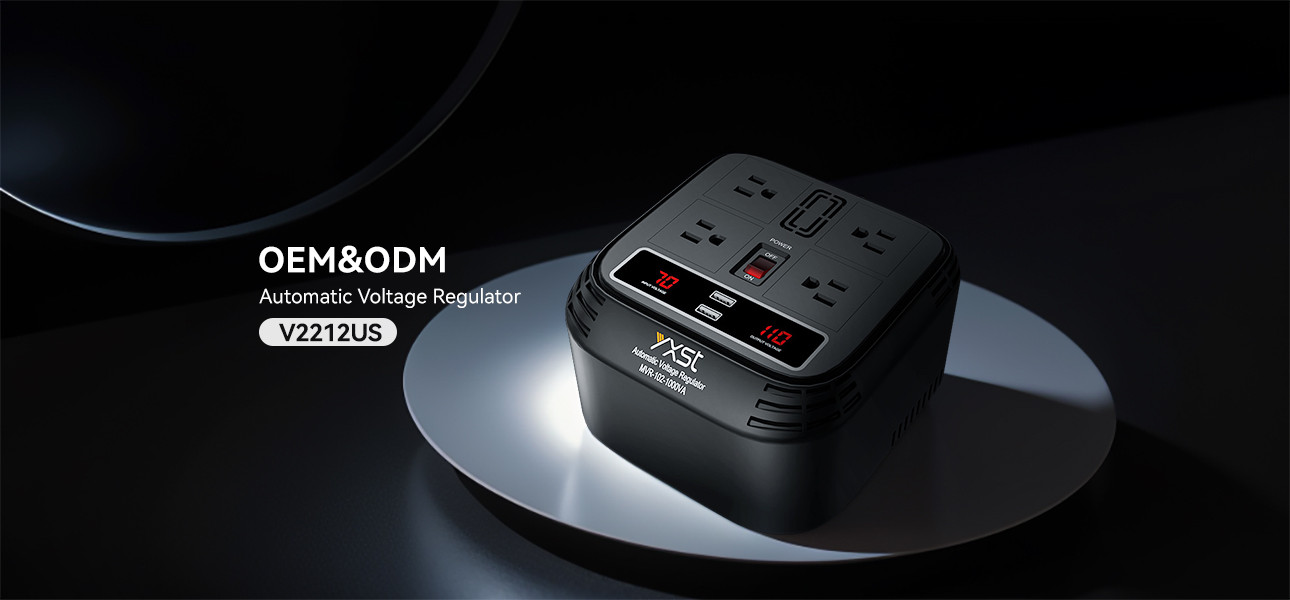

By using V2212US AVR voltage stabilizer For home application properly, you can effectively protect home appliances and extend their service life.
V2212US AVR Voltage Stabilizer For Home Application
Capacity:2000VA/1000W
INPUT Voltage:110/115/120VAC
INPUT Voltage Range:92-138VAC
Adjustable Delay Time:2/10/30s

V2212US Home application automatic voltage stabilizer AVR has a capacity of 2000VA and a power of 1000W. It can automatically adjust the output voltage according to the change of input voltage to ensure the stability of the output voltage. V2212US has multiple protection functions such as overvoltage protection, undervoltage protection, overcurrent protection, etc. to ensure the safe use of home appliances.
| Capacity | 2000VA/1000W |
| INPUT | |
| Voltage | 110/115/120VAC |
| Voltage Range | 92-138VAC |
| Adjustable Delay Time | 2/10/30s |
| Frequency | 50Hz/60Hz |
| Output | |
| Voltage Range | 88-148VAC |
| USB Charging Port | 2 Ports 2.1A Max |
| Surge Protection | 175 Joules |
| Environment | |
| Humidity | 0-95%(Non-condensing) |
| Noise Level | Less Than 40dB at 1M |
Core function: Provide a stable power environment for home appliances by automatically adjusting input voltage fluctuations (such as overvoltage, undervoltage, surge, etc.), extending the life of the equipment and preventing damage.
Typical equipment:
High-power home appliances: microwave ovens, washing machines, etc. These devices are sensitive to voltage and frequently start and stop, and are easily affected by voltage mutations.
Precision electronic equipment: smart TVs, audio systems, game consoles, computers, etc., require stable voltage to ensure operating accuracy and performance.
Technical advantages: Support wide input voltage range and fast response, effectively responding to voltage fluctuations in areas with unstable power grids.